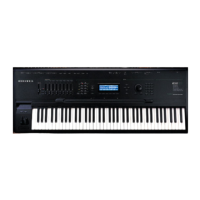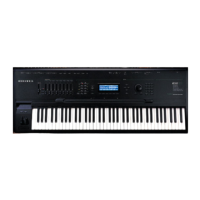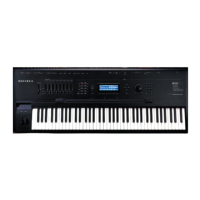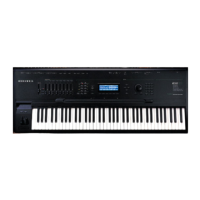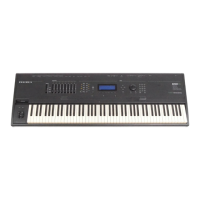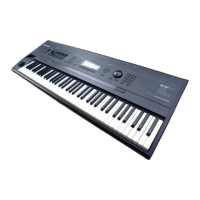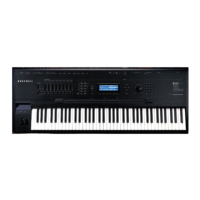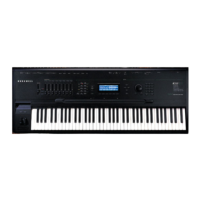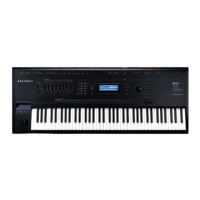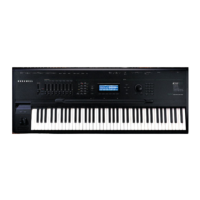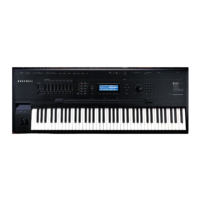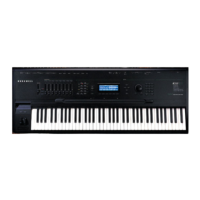Control Sources
Main Control Source List
6-11
102 Polyphonic pressure (PPress)
This unipolar control source responds to poly pressure (aftertouch) messages re-
ceived via MIDI. It generates a signal value scaled from 0 to +1 based on the poly
pressure value range of 0—127.
103 Bipolar polyphonic pressure (BPPress)
This is like PPress, but scales its signal value from -1 to +1.
104 Release Velocity (RelVel)
Also unipolar, this control source scales its signal value from 0 to +1 in response to
release velocity values from 0—127.
105 Bipolar Attack Velocity (Bi-AVel)
This is similar to AttVel, but scales its signal values from -1 to +1.
106, 107 Velocity Triggers 1 and 2 (VTRIG1, VTRIG2)
These unipolar control sources are switch controls, that is, they generate signal val-
ues of either 0 or +1. These must be programmed in order to have an effect; their
programming parameters are found on the VTRIG page in the Program Editor.
When a VTRIG’s Sense parameter is set to normal, it switches to +1 when a note
plays at a dynamic level exceeding the dynamic level set for its Level parameter.
See “THE VTRIG PAGE” in Chapter 6 in the
Performance Guide
for more informa-
tion.
108, 109 Random Variants 1 and 2 (RandV1, RandV2)
These are similar to GRandV1 and GRandV2, but are local, so will affect each con-
trol source parameter independently.
110, 111 ASR1, ASR2
These are programmable envelopes with three segments, Attack, Sustain, and Re-
lease. Their control source signals are unipolar. See “The ASR Page” in Chapter 6
in the
Performance Guide
for a thorough explanation.
112, 113 FUN1, FUN2
These generate their control source signals by combining the control signal values
of two programmable inputs, and performing a mathematical function on the re-
sult. Their control signals can be unipolar or bipolar, depending on the control
sources assigned as their inputs. See “The FUN Page” in Chapter 6 in the
Perfor-
mance Guide
. FUN2 becomes global (GFUN2) when the Globals parameter on the
COMMON page in the Program Editor is set to On.
114 LFO1
LFO1 can be unipolar or bipolar depending on the value set for the Shape param-
eter on its programming page. See “The LFO Page” in Chapter 6 in the
Performance
Guide
.
115 LFO1 Phase (LFO1ph)
This bipolar control source generates it signal based on the cycle of LFO1. When
the phase of LFO1 is 0 degrees, the signal value of LFO1ph is 0. When the phase of
LFO1 is 90 degrees, the signal value of LFO1ph is 1. When the phase of LFO1 is 180
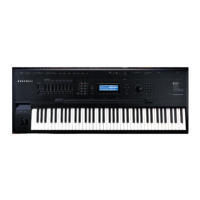
